Joy Gerrard & Paula Rego @ Cristea Roberts Gallery
27 January 2023 – 4 March 2023
This excellent exhibition at Cristea Roberts Gallery, highlights frighteningly the precarious nature of societal progress and freedoms. Two artists, Joy Gerrard and Paula Rego lay bare the dangers for women of living in patriarchal conservative societies.
As a man therefore writing about this, it is already from the perspective of someone not directly affected by the issues these works highlight. Being aware of the traumas and threats that women face is not the same as experiencing it.
Paula Rego’s ‘Abortion series’, a response to Portugal’s Catholic and conservative views on abortion at the time, depict the brutal reality of abortion when women have to turn to illegal means. In 1998 Portugal’s referendum on the legalisation of abortion failed. Angered and incensed, Paula Rego produced this powerful series of work as a response. In the subsequent 2007 referendum, abortion was finally legalised and these works are credited with helping to change Portuguese public opinion. A wonderful example of art influencing debate and political outcomes.
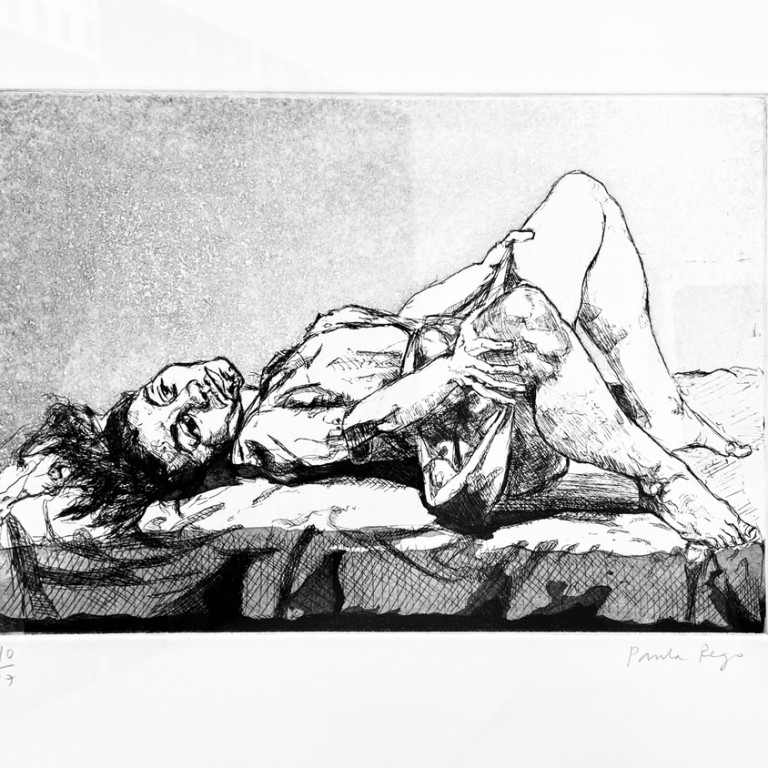
'Untitled 1' (1999)
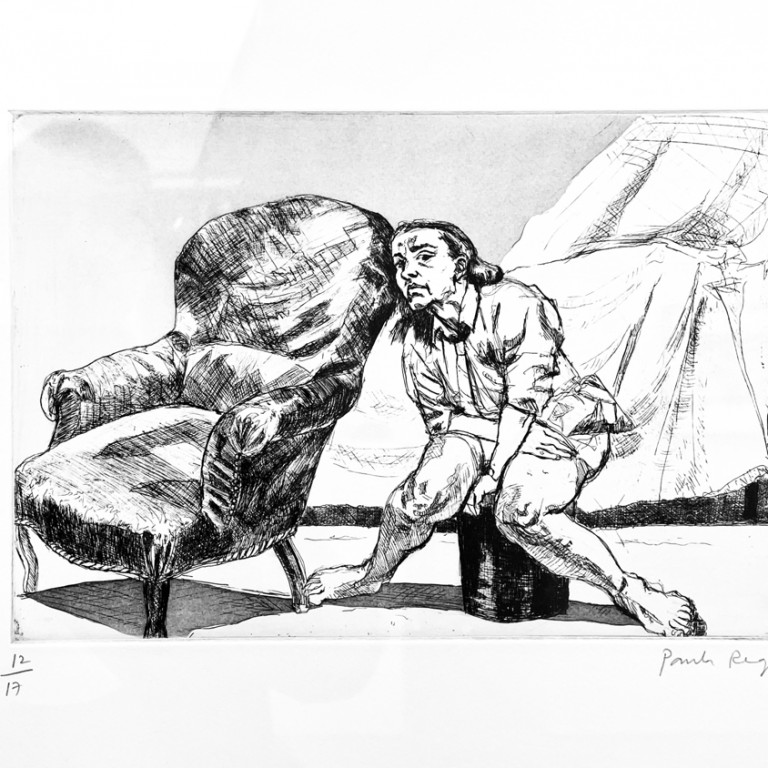
'Untitled 3' (1999)

'Untitled 5' (1999)
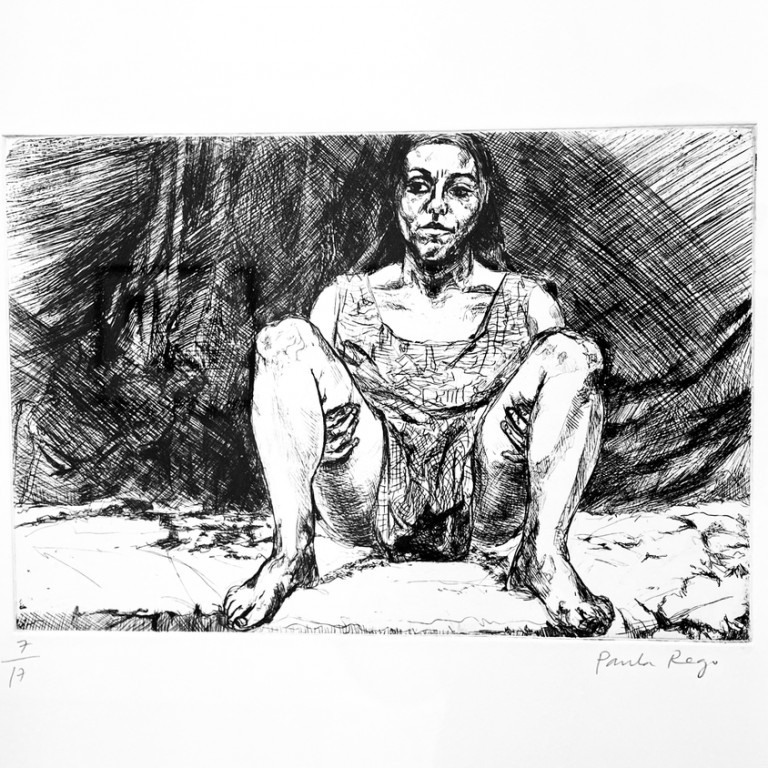
'Untitled 8' (1999)
I previously posted a more comprehensive review of Paula Rego’s exhibition at Tate Britain.
Joy Gerrard’s work brings to fore the stark reality of state violence against women in its many faceted ways.
In 2022, the US Supreme Court overruled the 1973 legislation Roe v Wade, which protected the rights of women to access abortion at a National level. Demoting it to legislation that can be determined at an individual state level, led to its outlawing across several US states.
Gerrard’s response to this focusses on the demonstrations which took place as a result of this decision by the Supreme Court.
Recreating images of demonstrations captured by media or surveillance cameras, Gerrard interrogates the presence of the individual within a collective and the influence the latter has. The surveillance by state sanctioned organisations, whether by the media or the police places the demonstrator simultaneously in a position of vulnerability but also of strength.
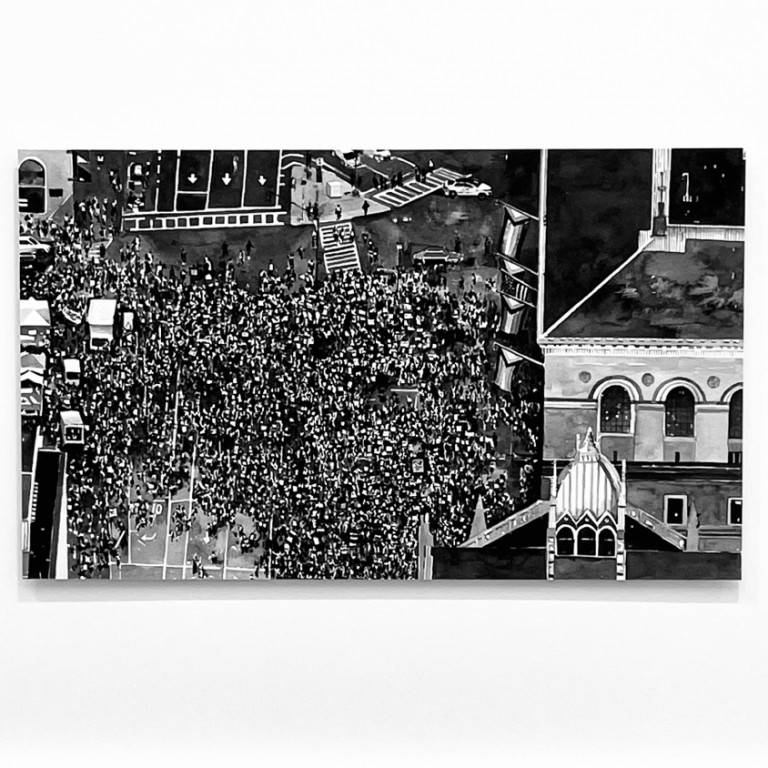
'Abortion rights protest after Roe versus wade falls' - Boston, June 24 (2022)
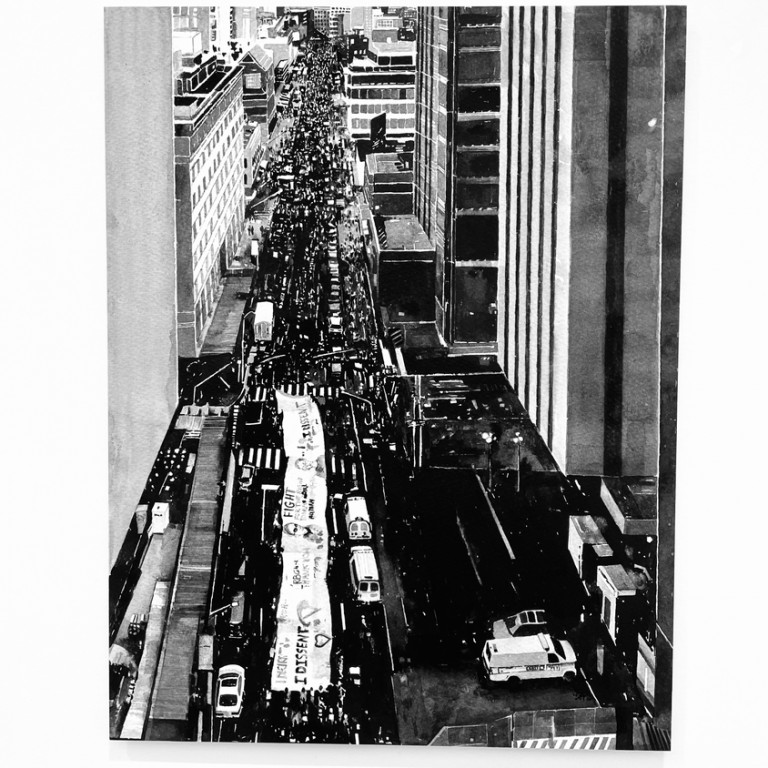
'I dissent' Abortion Rights Protest - New York, June 24, (2022)
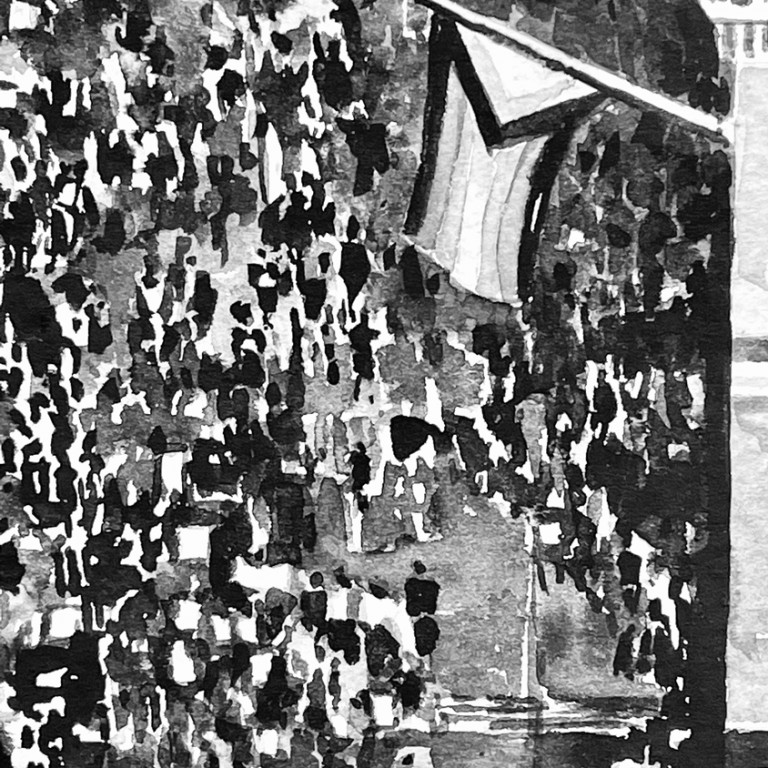
'Abortion rights protest after Roe versus wade falls' (2022) detail
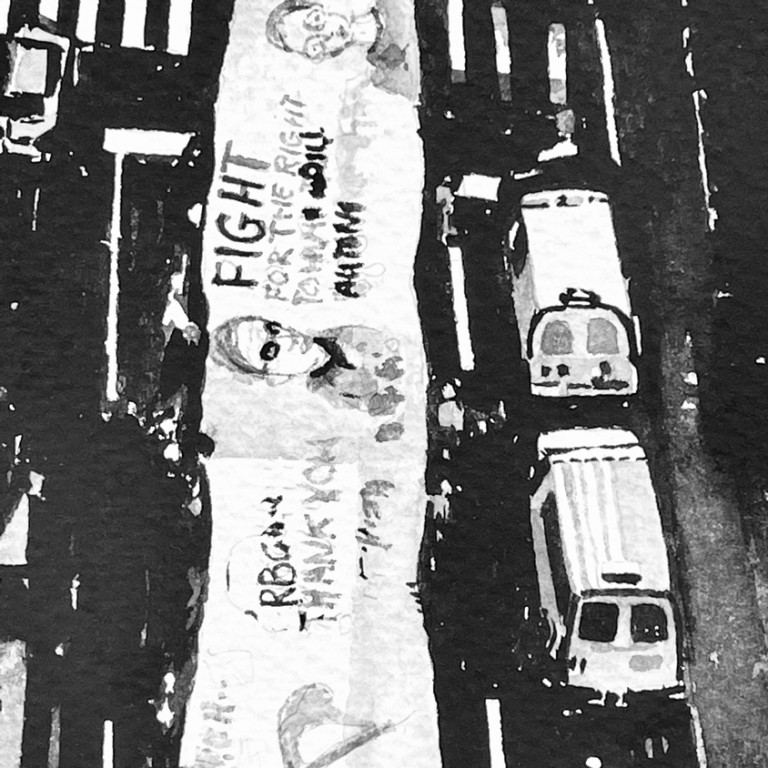
'I dissent' Abortion Rights Protest (2022) detail
At the time, on the other side of the Atlantic, Britain was experiencing its own ugly version of violence against women perpetrated by agents of the state. Sarah Everard, a woman, was abducted, raped and then murdered by a Metropolitan Police officer. The subsequent peaceful vigil held near the place of abduction was suppressed by police with, what can only be described as unnecessary force, on the pretext that they felt that the vigil had turned into an anti-police demonstration.
Gerrard’s response to this event and also to the demonstrations in Iran following the death of a Masha Amini, was once again to focus on the crowds those events drew and the power of collective action by women in the face of a society structured on a patriarchal hierarchy. These societies inevitably cultivating a climate of violence towards them.
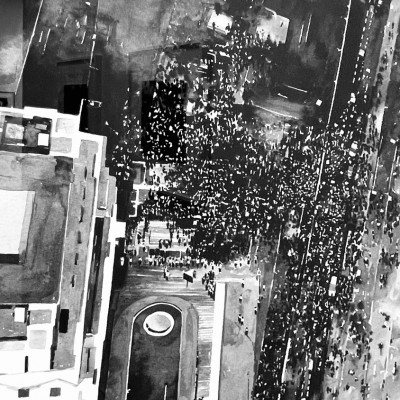
'Vigil/Protest, New Scotland Yard' - London, 14 March (2021)
What this exhibition highlighted with depressing clarity is that conservative societies and organisations run largely by men, will often make political decisions and take actions which are detrimental to the considerations and well-being of women. What it also highlighted is the fragility of freedoms, often considered as human rights, when subjected to an onslaught by those same conservative forces. In those circumstances only a collective response is likely to prevail.